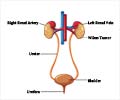
‘The incidence of renal cell carcinoma (RCC) increased by about 1.5 percent per year from 1988 through 2000, rose steeply by about 4.8 percent per year until 2008, and then stabilized.’
Tweet it Now
The research study, published online in the peer-reviewed journal Kidney Cancer, is important because it is the first report to demonstrate that the rising rate of kidney cancer seen in the U.S. over the past two decades may have ended. It also updates trends in kidney cancer incidence and mortality and documents the marked increase in the use of partial nephrectomies, a surgical treatment for early-stage disease that aims to preserve long-term kidney function. "The increased incidence of small, localized tumors without a corresponding increase in kidney cancer deaths suggests that the incidence trends, until around 2009, were mostly driven by incidental findings associated with the increased use in advanced diagnostic imaging," said Cyllene Morris, lead author of the study and chief epidemiologist in IPHI's California Cancer Reporting and Epidemiologic Surveillance (CalCARES) Program.
Between 1996 and 2010, the authors observed that the use of ultrasound doubled, computed tomography (CT) tripled, magnetic resonance imaging (MRI) quadrupled and positron emission tomography (PET) scans increased tenfold after 2004. More specifically, CT scan use grew at an annual rate of 14.3 percent between 2000 through 2005 before dropping to a rate of increase of 7.1 percent in 2006 and then down to 1.4 percent in 2009.
"The greatest challenge in managing patients with small kidney tumors is distinguishing between aggressive tumors which require surgical treatment and less aggressive tumors that may be appropriately managed with active surveillance," said Kenneth W. Kizer, distinguished professor of emergency medicine and IPHI's director. "It's an important distinction because not all small renal tumors are indolent, and metastatic disease can be present at the time of diagnosis."
Kidney cancer is the eighth most commonly diagnosed cancer in California. In 2013, there were more than 5,600 new cases diagnosed and 1,350 deaths. The majority of these cancers are renal cell carcinomas (RCC), which are twice as likely to be diagnosed among males.
Advertisement
Their analysis of the trends showed that incidence of renal cell carcinoma (RCC) increase by about 1.5 percent per year from 1988 through 2000, rose steeply by about 4.8 percent per year until 2008, and then stabilized. During the study period, 91 percent of patients with localized RCC had surgery. The proportion of patients receiving a partial nephrectomy increased from 6.3 percent in 1988 to 56 percent in 2013, and when tumors larger than 4 cm were excluded, partial nephrectomies increased from 13.8 percent in 1988 to 74.6 percent in 2013.
Advertisement















